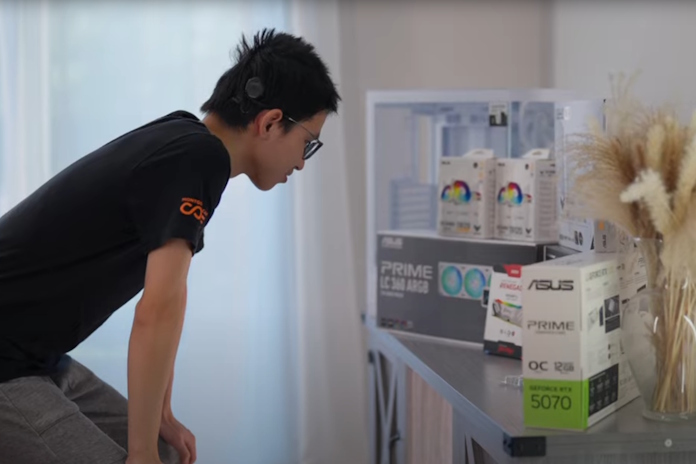When we first met Ethan, it was hard to decide whether we had more admiration for his ambitions or his determination. Ethan’s a college student studying computer science and astronomy, and he dreams of one day working at NASA and going to space. If you’re like us, when you imagine such a student, you envision a dorm room or bedroom that matches his ambitions. Maybe there’s a NASA Space Camp poster on the wall, a high-performance computing setup on a desk crowded with PC gear, entry-level robotics equipment scattered around the room, and perhaps a Buzz Lightyear action figure on a shelf.
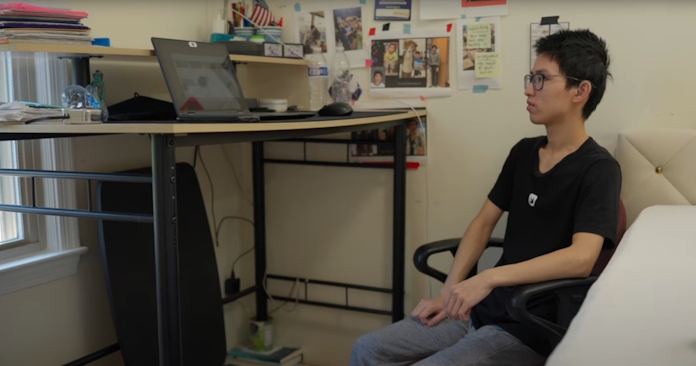
Unfortunately, Ethan’s setup for studying and exploration didn’t match his mission; the young man was stuck making the most out of very little. He had a Chromebook loaned out from the local county library on a desk propped up with books and tin cans. That device could let him access coursework and instructional videos, but it was flat-out unable to run the programs necessary for his computer science and astronomy work. To compensate, he occasionally borrowed a laptop from his sister or trekked to the computer lab on campus, but those options put him at the mercy of someone else’s schedule.
On top of all that, Ethan spent the first ten years of his life with undiagnosed hearing loss. He was eventually fitted for hearing aids, learned American sign language, received help from an interpreter at school, and received a cochlear implant.
For all the struggles that Ethan has faced, there’s one thing that we’ve never heard from him: complaints. When he entered a submission for our latest Extreme PC Makeover, he didn’t spend time complaining about the things that he didn’t have. He caught our attention with his determination to keep going.
Why computing power matters
For many students, Chromebooks have become a staple of their educational experience. Learning to use one is as common as learning how to open a locker or safely fire up a Bunsen burner. Yet while these low-cost, durable laptops are more than capable of providing access to web-based educational platforms and resources, they have limitations, especially for students in STEM majors.
For students like Ethan looking to run astronomy simulations and compile code, neither the operating system nor the underlying hardware of a Chromebook is sufficient. That’s not a knock on Chromebooks: the entire purpose of these devices is to provide a low-cost platform for everyday online computing. But complex tasks that rely on local processing power need beefier CPUs, plentiful memory, and bolstered graphics performance, either via a discrete laptop GPU or a desktop graphics card.
Ethan’s extreme PC makeover
To give Ethan the independence to pursue his dreams from the comfort of his own room using his own computer hardware, we equipped with him with an extreme PC makeover that overhauled his entire setup — including his untrustworthy desk and chair. While this system is proving to be a massive upgrade for Ethan, we focused primarily on components that could reasonably fit within a comp sci major’s PC building budget, so you could build a comparable machine for yourself. You might find that the overall price tag checks in lower than you expected.

For his PC, we started with an AMD Ryzen 7 7700X. This CPU offers eight cores and sixteen threads, giving it muscular power for CPU-intensive tasks like compiling code. We paired it with the TUF Gaming B850-BTF WIFi W, a motherboard built for rock-steady performance with a robust power solution, excellent cooling, and support for the latest graphics cards, memory, and storage drives.
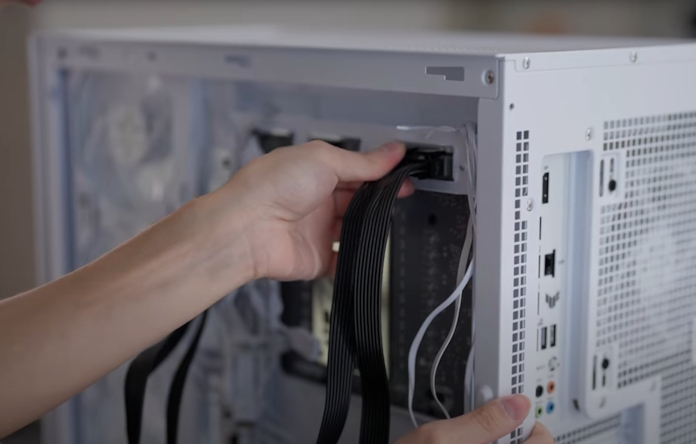
Additionally, this is a BTF motherboard with its connectors hidden on the back of the board, an arrangement that keeps wires and cables out of sight for a clean look.
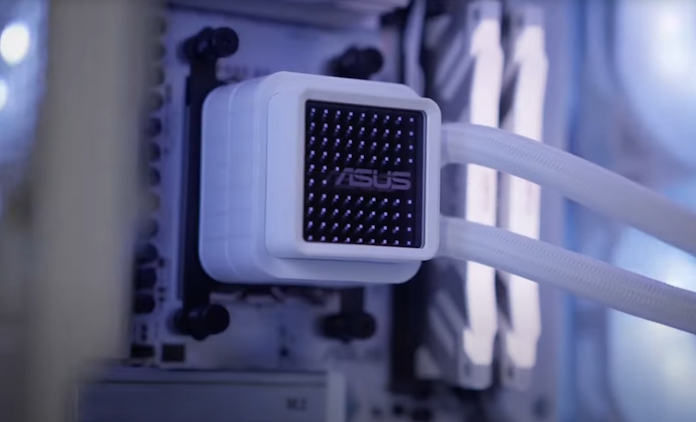 We’re keeping his CPU cool with the ASUS Prime LC 360 ARGB White Edition, an affordable AIO CPU liquid cooler that’s incredibly easy to install thanks to its integrated ARGB fans. Its looks complement the motherboard, too, thanks to the white finish and customizable infinity mirror lenses atop the pump housing.
We’re keeping his CPU cool with the ASUS Prime LC 360 ARGB White Edition, an affordable AIO CPU liquid cooler that’s incredibly easy to install thanks to its integrated ARGB fans. Its looks complement the motherboard, too, thanks to the white finish and customizable infinity mirror lenses atop the pump housing.
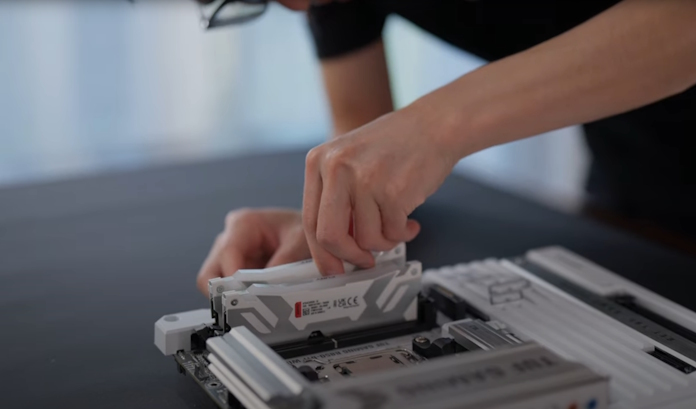
We’re grateful to Kingston for contributing the memory and storage for this build. They went above and beyond, sending Ethan a Kingston Fury Renegade 2x32GB DDR5-6400 memory kit and not one but two Kingston Fury Renegade G5 PCIe 5.0 NVMe 2TB SSDs. Wtih 64GB of DDR5 at his disposal, Ethan will be able to increase the complexity of his projects and simulations as he progresses in his coursework, while 4TB of ultra-fast storage gives him speedy access to files and fast-loading applications.
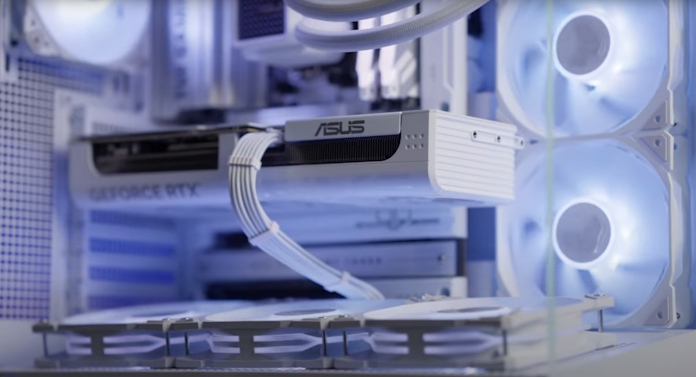
For powerful graphics and AI performance, we equipped Ethan’s PC with one of our most popular mainstream graphics cards: the Prime GeForce RTX 5070 White Edition. Draped in a white finish that coordinates with his other components, built for quiet, effective cooling with its triple-fan cooling solution, and primed for powerful next-gen performance with the latest NVIDIA Blackwell architecture, this graphics card is poised to offer Ethan potent GPU muscle for years to come. An efficient and durable ASUS Prime 850W Gold PSU provides the power delivery for this build.
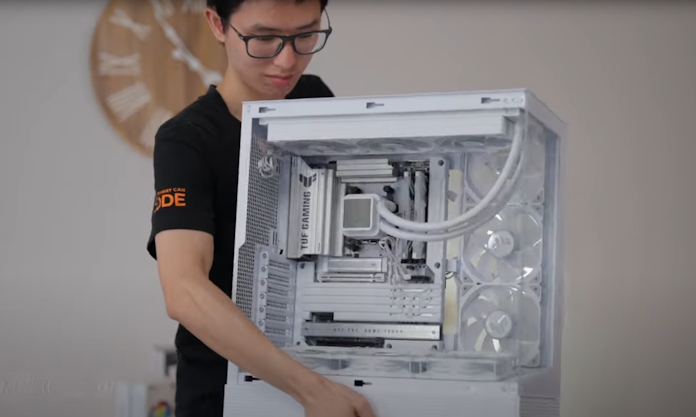
All this hardware was installed in the white version of the ASUS A31 chassis. Checking in at a MSRP of $79.99 (USD), this PC case offers incredible value. Its panoramic design puts internal components on full display, and it’s fully compatible with large graphics cards, beefy liquid cooling radiators, and standard-sized ATX and BTF motherboards. TUF Gaming TR120 ARGB chassis fans keep the cooling air moving, and they’re also available in reverse airflow editions, which are perfect for the bottom panel of the chassis.
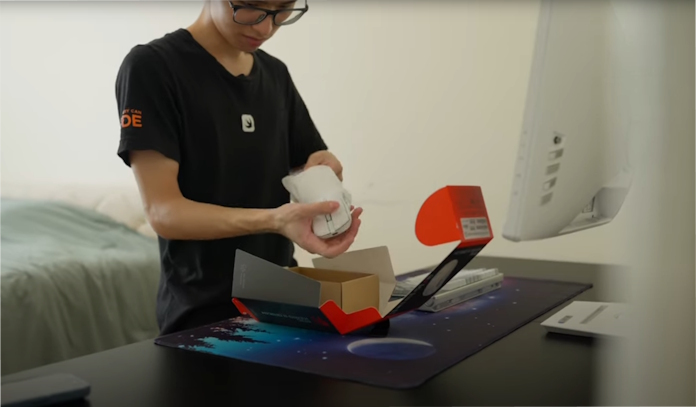
Ethan’s new PC deserved a monitor and peripherals set that matched its performance and aesthetic, so we equipped him with gear from our Republic of Gamers lineup draped in the same white finish. We started with the ROG Azoth, a 75% custom keyboard that delivers a superb typing experience with ROG NX mechanical switches, a unique gasket mount design, and three layers of dampening foams. We paired it with the ROG Keris II Origin gaming mouse, an ultra-light ergonomic mouse with a 42,000 DPI ROG AimPoint Pro Sensor and ROG SpeedNova Wireless technology. The stylish ROG Delta II gaming headset will serve up pristine audio for Ethan, and through its versatile tri-mode connectivity he’ll be able to connect to two devices simultaneously, with separate volume controls for each stream.
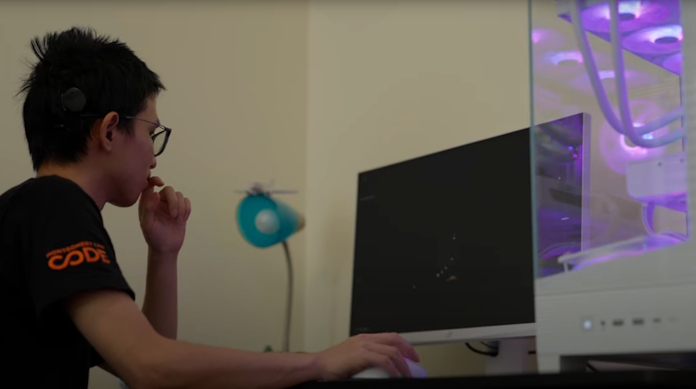
Finally, we equipped Ethan with a much better view of his projects and astronomy simulations — not to mention his favorite games — with the ROG Strix XG27ACG-W gaming monitor. A 27-inch monitor with a 1440p resolution and a 180Hz refresh rate (OC), it offers excellent detail and fluid motion in fast-paced action. Its ultracompact stand made it easy to integrate into Ethan’s setup.
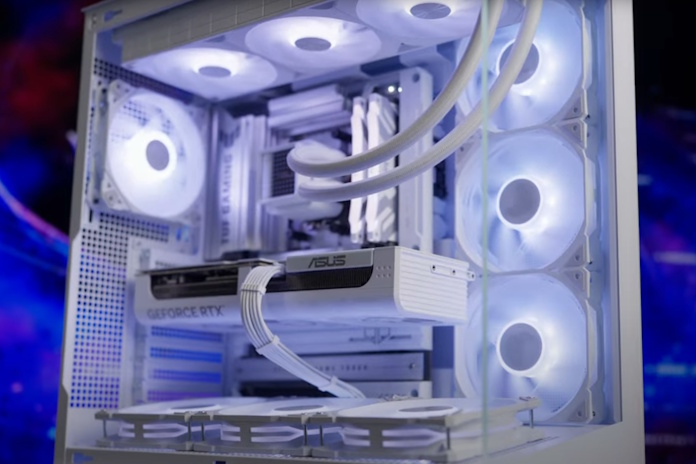
Ethan’s determination and can-do attitude made him the perfect choice for the ASUS Extreme PC Makeover – Back to School Edition 2025. We were thrilled to have the opportunity to knock down some of the obstacles that threatened to get in the way of his dreams, and we look forward to seeing what he’ll be able to accomplish.
If you missed the submission window for this last Extreme PC Makeover, don’t fret — there’s another one just around the corner. Watch for an announcement here on Edge Up or at the PC DIY home page, keep tabs on our collaborator extraordinaire Andie the Lab, and follow us on Instagram or X to stay in the loop.

